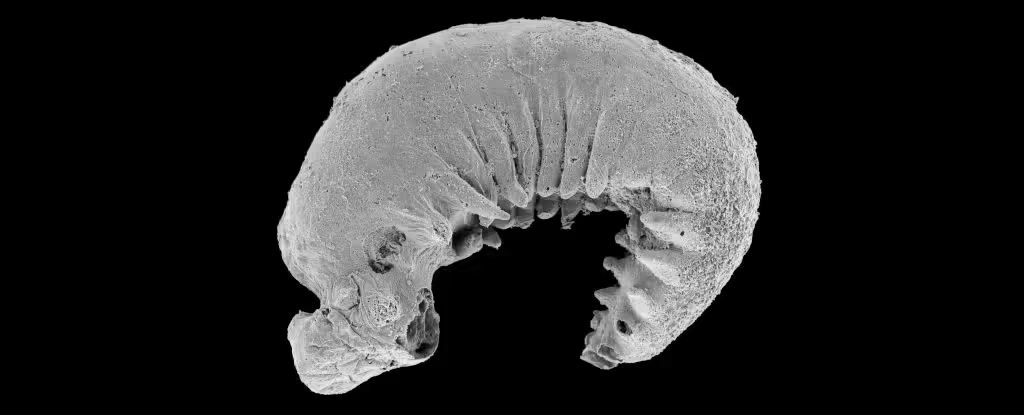Every once in a while, a fossil so magnificent emerges on our planet that all you have to do is marvel. Sometimes these fossils are magnificent remnants of what once chewed up the Earth’s surface. Sometimes they’re just dust, particles that won’t be looked at twice but hold many secrets.
Such is the case with a sesame seed-sized baby worm fossil found in a rock in China. The larva, from the Cambrian period, some 520 million years ago, represents an entirely new genus and species called euarthropod. Youti yuanshi.
Such a small piece of rock could easily be overlooked, but this remarkable fossil is almost perfectly preserved, with its internal anatomy intact. And it represents a species that was the ancestor of the arthropods that roam the planet today, including spiders, crabs and insects. This means it can tell us about the evolutionary history of these animals in ways that few fossils can.
“Whenever I dream about the fossil I most want to discover, an arthropod larva always comes to mind because developmental data is so important for understanding their evolution,” says paleontologist Martin Smith of Durham University in the United Kingdom.
“But the larvae are so small and fragile that the chances of finding a single fossil are almost zero – or so I thought! I already knew that this simple worm-like fossil was something special, but when I saw the magnificent structures preserved under its skin, I was astounded; how had these intricate features escaped decay and are still visible here after half a billion years?”
Y. yuanshi From a virtual autopsy using 3D X-ray images. (Emma J. Uzun)
The three-dimensional fossil was found in a shale rock known to be particularly rich in fossils, called the Yuanshan Formation. It was meticulously extracted with acetic acid and then subjected to a high-resolution scan to image its entirety and perhaps offer a glimpse of what lies within.
Although the fossil is only a few millimetres in size, it is impressively detailed. It appears to have textured skin, a head and legs. And when viewed from the inside, X-ray CT scans revealed its intact internal anatomy, including the larva’s brain, digestive glands, circulatory system and nervous system.
“It’s always interesting to see what’s inside a specimen with 3D imaging,” says geologist Catherine Dobson of the University of Strathclyde in the United Kingdom, “but in this incredibly tiny larva, natural fossilization provided almost perfect preservation.”
Because the larva is so old and represents a developmental stage in the arthropod life cycle rarely seen in ancient fossils, scientists think: Y. yuanshi It could help us learn about the early development and evolution of this highly successful species of the animal kingdom.
The worm itself looks simple compared to the complex bodies of today’s arthropods, but hints of later animals can be seen in its internal anatomy. For example, the worm’s brain region, the protocerebrum, is a prototype for the more complex skull anatomy that evolved during arthropod evolution.
Also circulatory and digestive anatomy Y. yuanshi may be associated with the later evolution of arthropod traits.
This early anatomy underscores how brilliantly arthropods diversified, developing the ability to specialise in a wide range of environments and thrive worldwide, the researchers say. Despite being the only fossil Y. yuanshi Although it may look like a dwarf in the palm of your hand, its discovery has major implications for our understanding of life on Earth. The study was published on: Nature.
Source: Port Altele
